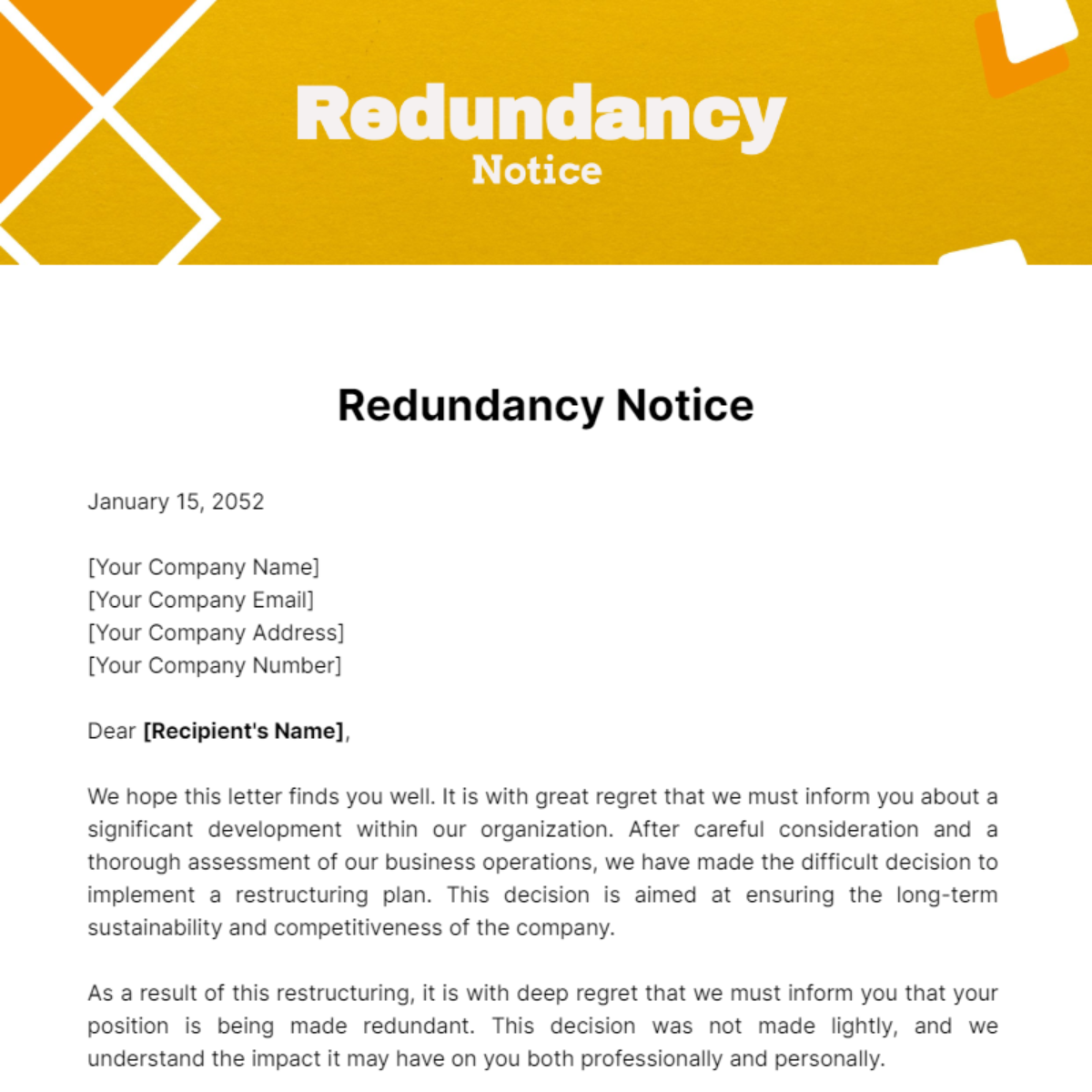Small Business Closing Employee Rights UK: What You Need to Understand About Redundancy
Small Business Closing Employee Rights UK: What You Need to Understand About Redundancy
Blog Article
Checking Out the Interplay In Between Business Redundancy and Business Versatility for Future Growth
In the dynamic landscape of today's service globe, the intricate relationship between firm redundancy and business adaptability emerges as a vital variable for sustained growth and success. Companies typically encounter the challenge of striking a delicate balance in between keeping a degree of redundancy to mitigate risks and promoting adaptability to respond quickly to the ever-evolving market needs.
Relevance of Firm Redundancy
Firm redundancy is an essential element that enhances organizational resilience and reduces operational dangers. By integrating redundancy steps within the organizational framework, companies can better endure unanticipated disturbances and variations in the organization setting. Redundancy offers as a tactical buffer, allowing business to adjust and react efficiently to unexpected difficulties without jeopardizing essential operations.
One secret aspect of the value of firm redundancy is its role in guaranteeing continuity during times of crisis. When encountered with unexpected modifications or emergencies, repetitive systems, sources, or personnel can tip in to preserve important functions and prevent prevalent interruptions. This continuity not just safeguards the business's reputation and consumer count on but additionally reduces financial losses and functional downtime.
Methods for Business Flexibility

Another essential technique is investing in modern technology and infrastructure that can support versatility and scalability. Applying electronic devices, automation, and information analytics can streamline procedures, boost efficiency, and supply useful understandings for educated decision-making. In addition, developing versatile business frameworks that permit for fast changes to market characteristics and consumer demands is essential for staying affordable in a swiftly advancing setting. By proactively recognizing possible disturbances and chances, organizations can proactively adapt and flourish in an ever-changing organization landscape.
Harmonizing Redundancy and Versatility
Achieving an unified balance between functional redundancy and organizational adaptability is extremely important in navigating the intricacies of a vibrant business setting. Redundancy within a business provides a safeguard, ensuring connection and stability in procedures. Nevertheless, an unwanted of redundancy can result in inefficiencies and prevent adaptability to transforming market conditions. On the various other hand, organizational versatility allows firms to react quickly to exterior interruptions and confiscate new possibilities. Striking the best equilibrium between redundancy and flexibility is a delicate procedure that requires a deep understanding of the company's objectives, market characteristics, and risk resistance.
To attain this equilibrium, firms require to perform regular assessments of their operations to identify areas where redundancy is required for danger mitigation and where versatility can drive development and growth. Executing versatile structures, fostering a culture of continual understanding and renovation, and urging open interaction across all levels of the organization are key strategies to harmonize redundancy and adaptability effectively. By lining up these 2 critical aspects, firms can position themselves for lasting growth and success in an ever-changing company landscape.
Study on Adjustment Success
In checking out instances of successful business adaptation, it comes to be apparent that the interaction in between functional redundancy and versatility is a defining element in shaping resistant businesses. One engaging study is that of Netflix. Originally a DVD rental solution, Netflix demonstrated impressive versatility by transitioning into a streaming system when digitalization disrupted the sector. By tactically purchasing modern technology and content production, Netflix not only survived however thrived in a quickly advancing market. One more standout instance is Amazon. Starting as an on-line bookstore, Amazon continually adapted its service model, broadening into diverse fields such as cloud computing and expert system. This versatility permitted Amazon to stay in advance of rivals and meet transforming consumer demands. advice Finally, Adobe provides a notable image of successful adaptation. The business changed from selling software application licenses to a subscription-based version, ensuring persisting earnings streams and enhanced client involvement. These study highlight the value of functional redundancy coupled with organizational image source versatility in cultivating lasting development and competitiveness.
Building Resilience for Future Growth
Structure durability for future development needs a tactical placement of operational procedures with market dynamics and emerging patterns. Companies have to adapt to transforming atmospheres by fostering a society of flexibility, technology, and continuous enhancement.
Moreover, cultivating strong partnerships with stakeholders, such as consumers, staff members, vendors, and the neighborhood, is vital for preserving and weathering uncertainties trust fund and assistance throughout stormy times. Effective interaction and openness play an essential role in building resilience, as they aid line up assumptions and facilitate collaboration in navigating unpredictabilities.
Furthermore, organizations require to focus on learning and development efforts to upskill staff members and outfit them with the required tools to adjust to transforming circumstances. By buying their labor force, firms can boost their adaptability and agility, eventually enhancing their strength for lasting future development.
Verdict

In the vibrant landscape of today's business globe, the intricate connection in between company redundancy and business adaptability arises as a crucial aspect for continual growth and success. Business often deal with the obstacle of striking a delicate equilibrium between preserving a level of redundancy to alleviate threats and promoting flexibility to respond quickly to the ever-evolving market needs.To attain this balance, firms need to carry out routine analyses of their visit here procedures to identify areas where redundancy is essential for threat mitigation and where versatility can drive technology and growth.In conclusion, the interplay in between firm redundancy and organizational flexibility is crucial for future growth. Building resilience with a combination of redundancy and flexibility will make certain that companies are prepared for the difficulties of the future.
Report this page